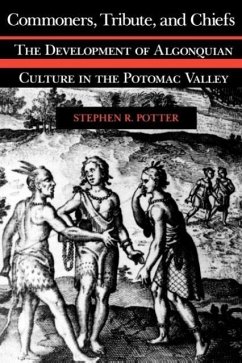When Captain John Smith explored the Potomac River in 1608, it was a frontier between two of the most politically complex Indian cultures in the Middle Atlantic region - the Conoy chiefdom of southern Maryland and the Powhatan chiefdom of eastern Virginia. Some of these diverse Algonquian-speaking peoples acknowledged the overlordship of the Piscataways, the largest group of the Conoys, others acknowledged the authority of the paramount chief Powhatan, and still others, like the Patawomekes, acknowledged no ruler greater than their own. The rise and fall of these polities is the subject of Commoners, Tribute, and Chiefs. Using an innovative combination of archaeology, anthropology, and ethno-history, Stephen Potter traces the rise of one Indian group, the Chicacoans, whose domain on the south shore of the Potomac straddled the boundary between the Powhatans and the Conoys. By presenting a case study of the Chicacoans from A.D. 200 to the early seventeenth century, Potter offers readers a window onto the development of Algonquian culture in the Chesapeake and illuminates the responses of its constituent societies to the invading Europeans. He examines the stratification of individual chiefdoms into elites and masses of tribute-paying commoners, and he demonstrates the progressive consolidation of Algonquian peoples in the century preceding the European influx. While most previous scholarship on the Indians of the Potomac has centered on the historic accounts of Captain John Smith and his contemporaries, Potter draws extensively on a wealth of materials encountered during his years of research. His fascinating narrative succeeds both as a detailed archaeological and ethnohistorical studyof the Chicacoans and as a comprehensive interpretation of Algonquian culture.
Hinweis: Dieser Artikel kann nur an eine deutsche Lieferadresse ausgeliefert werden.
Hinweis: Dieser Artikel kann nur an eine deutsche Lieferadresse ausgeliefert werden.








